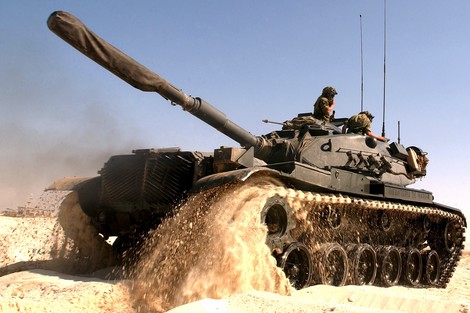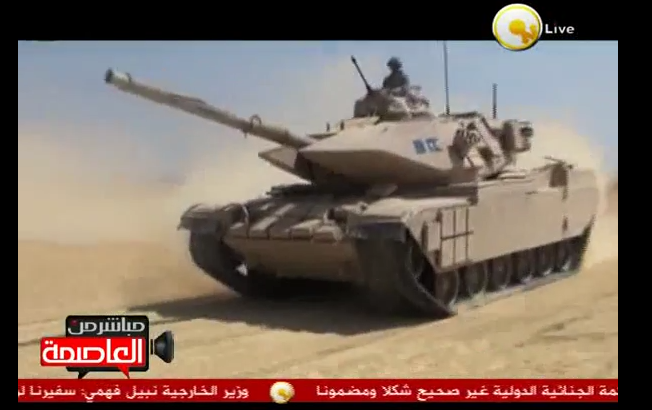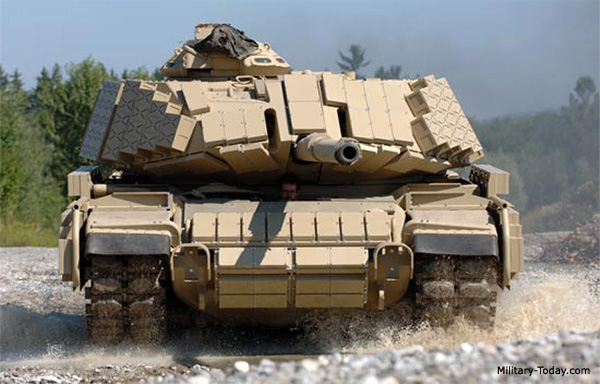
تخطط الشركة الأمريكية "ريثيون"، المتخصصة في أنظمة الدفاع، للدخول إلى سوق تجديد السلاح المغربي، من خلال المساهمة في صيانة وإصلاح دبابات "إم. باتون"، التي تعتبر دول الشرق الأوسط وشمال إفريقيا أكثر البلدان التي اقتنتها من الولايات المتحدة الأمريكية.
وأدخلت "ريثيون" عددا من التحسينات على هذا الصنف من المقاتلات، بتنسيق مع الجيش الأمريكي، الذي كان أنتج النماذج الأولى لدبابات "باتون" سنة 1960. وأورد موقع "ديفانس نيوز"، المتخصص في الشأن العسكري، أن الشركة ستقوم بتجديد المعدات القديمة لكي تتلاءم من التطور الذي عرفه هذا المجال خلال السنوات الأخيرة، في وقت تتفاوت قيمة الإنفاق على الدفاع بين مختلف البلدان عبر العالم.
وعلى غرار طائرات " CH-47شينوك" التي ستنتهي صلاحيتها مع سنة 2060، تتجه الشركة الأمريكية إلى تجديد الدبابات المذكورة في عدد من الدول، خاصة المغرب ومصر والأردن وعمان والمملكة العربية السعودية والبحرين ولبنان، بالإضافة إلى كل من تايلاند وتايوان.
وصرح تود بروبيرت، نائب الرئيس التنفيذي والمكلف بقطاع الأعمال بشركة "ريثيون"، بأن الأخيرة تريد المساهمة في الحرب على الإرهاب والتحول إلى المحيط الهادئ، ومساعدة الدول على مواجهة ما أسماها "التهديدات الإرهابية الجديدة"، مضيفا أن الشركة تتوفر على إستراتيجية خاصة في هذا المجال، تستطيع مختلف الدول الاعتماد عليها.
وتدخل خطة صيانة "إم باتون" ضمن سياسة الشركة الأمريكية، بعد أن كانت هذه النوعية من الدبابات الأكثر استعمالات من قبل الولايات المتحدة الأمريكية خلال ستينيات القرن الماضي، قبل أن يتم تعويضها بدبابات "إم 1 أبرامز" بعد عشرين سنة، ويتم استيرادها من قبل عدد من الدول. وتشير التقديرات إلى أن عدد هذه الدبابات عبر العالم يتراوح بين 7000 و10000 دبابة، أغلبها في منطقة الشرق الأوسط.
وتصب التحسينات التي تطمح الشركة إلى إدخالها في تطوير دقة الدبابات عبر برنامج جديد، بالإضافة الرفع من عدد القذائف، وكذا تغيير المحرك لكي ينتقل من 750 حصانا إلى 950، وتحديث النظام الإلكتروني، في وقت تصنف "ريثيون" في قائمة الشركات العشر الأقوى في العالم في مجال الدفاع.
http://www.hespress.com/orbites/308808.html
هذا المصدر مغربي و الكاتب ليس متخصصا و فقط يترجم مع أن قلة الفهم العسكري خانته لكن لتسهيل القراءة
بينما ها هو الأصل
WASHINGTON — Raytheon, in concert with the US Army, has put together a package of upgrades to modernize 1960s-era Patton tanks still used by many Middle Eastern countries.
The effort is a procurement formula for bringing old equipment up to speed in an era where most countries' defense spending budgets are declining and the idea of building anything new from the ground up is rarity.
The Pentagon and the defense industry have heard it said countless times: The military services have to make do with what they have.
And the services are turning more and more to upgrading and modernizing what they already own whether it’s aircraft like the CH-47 Chinook expected to fly for 100 years before it’s retired in the 2060s or taking vehicles already in the inventory and adding lethality through a bigger gun like in the case of the Stryker.
Raytheon’s Mission Support and Modernization business core competency is taking a look at what is in a military’s inventory and figuring out ways to sustain and modernize such equipment to meet the current threat using an affordable strategy.
“The thing that is most interesting to me when you look at the current state from a readiness standpoint and what we need to do, all the things the administration wants to do, focus on the war on terror, the shift to the Pacific, deal with emerging cyber threats, it’s something that is a fairly significant challenge given the budget environment that we are in,” Todd Probert, Raytheon’s vice president in charge of the business sector, told Defense News.
“I think the recipe we have, modernization through sustainment, is going to be a key mechanism for the US to move through this period,” he said.
And that strategy will likely be employed by countless other countries around the world as well.
Take the M60 Patton tank, for example. It became the standard main battle tank for the US Army in the 1960s, but was replaced by the M1 Abrams 20 years later. Yet, there are still Patton tanks used by countries around the world and there are estimated to be about 7,000 to 10,000 of them used by countries in the Middle East, Probert said.
Raytheon said it was aware of tanks remaining in Egypt, Jordan, Oman, Bahrain, Saudi Arabia, Morocco, Lebanon, Israel, Thailand and Taiwan.
The company’s program to upgrade the Patton tanks began many years back when Raytheon developed a new fire control solution for Jordan’s tanks. Raytheon completed fielding the new fire control systems to the country about five years ago, according to Probert
Now Raytheon has created a package of modernization-level upgrades for the tanks that goes far beyond the initial upgrade for Jordan, Probert said.
The company’s service life extension program for the M60 A3 variant increases lethality ranges and accuracy through an advanced digital fire control system using US Army-developed software and by swapping out the tank’s 105mm cannon with a 120mm gun.
Raytheon has also changed out a 750 horsepower engine to a 950 horsepower one, which restarts the engine to zero-hour condition, Probert said.
The tank weighs a full ton less as Raytheon has changed out the hydraulics with electronic systems.
Through the new upgrades the tank will also be able to fire on the move rather than having to use a soldier in the loop to stop the tank, aim the gun and fire, which turns the tank into an easy target on the battlefield. The fire control system is linked to a GPS that tells it where the tank is and digitally coordinates automatic aiming, discrimination and firing capability.
The entire package of upgrades would cost one-third of the price tag of a new tank, he said.
The Patton tanks “are a generation older, but with what we are doing, we are allowing them to be more relevant in the current fight,” Probert said.
The tank and its full package of upgrades has been tested rigorously at Aberdeen Proving Ground, Maryland, in partnership with the US Army.
Raytheon has been in discussions with a number of countries in the Middle East about upgrading tanks, seeing an emerging need for the service life extension of the vehicles.
“It comes down to systems engineering first and foremost, coming in and appreciating what is needed marry that up with the customers' desires and with what the threat and challenges that they are facing, and system engineering a solution that makes sense for that platform or that particular IT or intelligence command and control system,” Probert said.
“We have a lot of stuff in play,” he added.
http://www.defensenews.com/story/de...breathes-new-life-into-patton-tanks/85343566/






